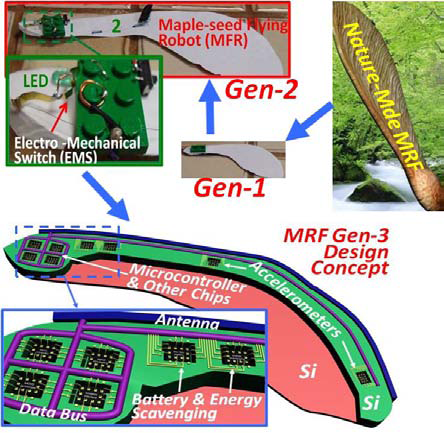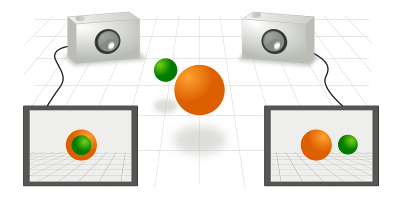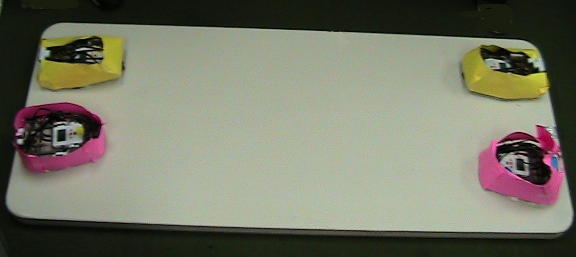| |

|
Fall Section Conference
Thursday, November 4, 2010 5pm - 9pm
IEEE Southeastern Michigan Section
|
|
Conference Home
 Invited Presentations Invited Presentations
|
We are very pleased to present the following invited presentations at the Nanotechnology Conference.
Check the
program
for the full conference schedule.
For keynote speaker information, see the
keynote page.
For some background information, see the Introduction to the Technical Topics page.
| |
Technical Track A
|
| 5:00pm - 6:00pm |
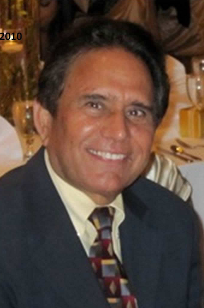 |
| Prof. Dean Aslam |
Outreach and Workforce Training using Maple-Seed Robotic Fliers (MRF)
Prof. Dean Aslam, Zongliang Cao, and Mike Varney
Michigan State University
(Chapter XIII , IEEE Education Society)
Recent advances in sensors and micro-systems have led to fascinating developments
in man- and nature-made robotic systems. As robots are interesting vehicles to
teach new technologies, this talk exploits the underlying concepts
of nature-made maple-seed robotic fliers (MRF) to develop man-made MRFs using everyday
objects such paper, wires, LEDs and
LEGOs.
Initial demos presented in Robotic Camps and Workshops
during 2010 indicate a strong interest among K-12 and college students.
In this presentation, in addition to a review of nature- and man-made systems, the latest work on Gen-1 and Gen 2 MRFs will be reported.
Dr. Aslam is Associate VP Americas of
MANCEF, Assoc.,
Director of
NSF WIMS ERC,
Professor Electrical and Computer Engineering and founding Editor-in-Chief of
Journal of Nanosystems and Technology.
|
| 6:00pm - 7:00pm |
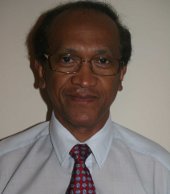 |
| Dr. Heri Rakouth |
Wireless Communications: Foundations and Applications to Ground Transportation and
Robotics
Dr. Heri Rakouth
Manager, Technology Exploration, ITO,
Delphi
Headquarters, Troy, MI.
Adjunct Lecturer, School of Engineering and Computer Science, ECE department,
Oakland University
, Rochester, MI.
(Chapter IV, Trident - IEEE Antennas and Propagation Society, Electron Devices Society, Microwave Theory and Techniques Society)
Abstract:
This presentation is aimed at providing an overview of the wireless communication
technology as it relates to ground transportation and robotics.
The Foundations section will be developed in three stages. Firstly, it will present the
challenges caused by propagation (e.g. multipath, Doppler spread) and interference that
can impact the communication budget link. Secondly, it will introduce the related mitigation
techniques (wireless channel: models, capacity, modulation, detection, diversity) and their
performance measured in terms of signal to noise ratio (SNR) and error probability.
The Applications section will discuss topics relating to most recent developments in
automotive connectivity and in robotic positioning and remote control.
The automotive discussions will be focused on vehicle to infrastructure (V2I) and vehicle to
vehicle (V2V) communications with emphasis in regards to the Dedicated Short Range
Communication (DSRC) systems.
As far as robotics, an example of characterization and modeling of wireless channels for
networked robotic systems using WiFi communications. The presentation will conclude on
mobile robot positioning for indoor environments. To that end, the positioning performance
of three communication systems will be compared. They are the wireless local area
networks (WLAN) based system, the wireless sensor network (WSN) system, and the ultrawide
band (UWB) system.
Biography:
Dr. Heri Rakouth is currently Manager, Technology Exploration at the Innovation and
Technology Office (ITO) of Delphi Corp. Troy, Michigan. In this capacity, he coordinates
technology innovation activities across three out the five divisions of Delphi.
Dr. Rakouth has about 30 years experience in both aerospace/defense telecommunications
and automotive electronics industries. He has held various responsibilities at
Thomson CSF/Thales
and
Renault
in France as product engineer and technical manager before joining Delphi in 1996.
In his most recent assignment, Dr. Rakouth spearheaded cross-divisional efforts that have
led to the build of the telematics business development team for the aftermarket and the
launch of the V2X proof of concept project recently implemented for the
Land Transport Authority of Singapore.
Over the past two decades Dr. Rakouth has contributed to the build the European directive
in EMC 95/54/EC (now known as 2004/104/EC) in championing several test methods that
are currently part the international standards ISO 11451, ISO 11452, and CISPR 25.
In the academic arena, Dr. Rakouth is currently serving as an adjunct faculty at the ECE
department of
Oakland University teaching Wireless Communications and Power Electronics.
He also teaches Mathematics at
Davenport University
and
Mott Community College.
He holds a BS-ME-EE from
Ecole Spéciale de Mécanique et d' Electricité (ESME) Paris,
France, a MS and a PhD degree in Electrical Engineering from the
Université of Pierre et Marie Curie (UPMC) of Paris, France
along with an MBA from SVSU and MS-Manufacturing Management from
Kettering University.
Dr. Rakouth has published over twenty IEEE or equivalent technical papers and tens of
classified and non-classified reports. He holds several U.S. and European patents.
|
| |
Technical Track B
|
| 5:00pm - 6:00pm |
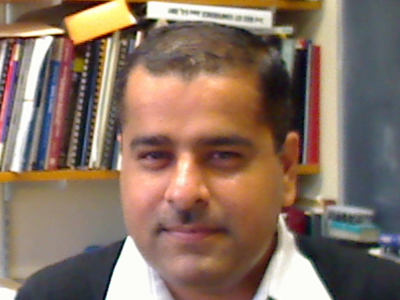 |
| Ravi Anand |
Autonomous Navigation of Robots
Mr. Ravi Anand
Electrical and Computer Engineering Department, Oakland University
(Chapter V, IEEE Computer Society)
Autonomous navigation of Robots implies that a robot is able to navigate without Human interaction.
An area or a scope may be pre-defined within which the robot is able to navigate.
In doing so it should be able to
-
Determine a path to reach a point B from Point A (Path Planning)
-
Identify obstacles in the path that may change with time
-
Modify its Path to avoid collision with obstacles
Applications:
The applications of these capabilities are numerous and diverse.
They may range from Lawn Movers, Space Exploration or Exploration of Other remote areas that may not be easily accessible for various reasons
Implementation:
Path Planning Challenges:
Before we determine the best path from Point A to Point B, it is important that we are able
to accurately specify the Reference Points also called Waypoint(s).
Typically a waypoint comprises of Latitude, Longitude and altitude if needed.
The challenge lies in determining the current position of the Robot.
The GPS (Global Positioning System) receiver may have its own limitations.
Obstacle Detection:
Many Robots that are required to navigate autonomously use Sonar transducers or laser range
sensors
(LIDAR - Light Detection and Ranging) to detect obstacles.
Another approach is to use Stereo Vision to detect Obstacles
Obstacle Detection using Stereo Vision:
In this presentation we describe how Stereo Vision can be implemented for obstacle detection and obstacle avoidance in an Autonomous Robot
Two cameras mounted on the robot and separated by a predefined and constant distance capture images in real-time. It
compares the images to find the objects that match. The disparity between a specific object in the two images is used to calculate their distance.
The two dimensional images obtained by the Cameras are combined to form a 3-D model. This information is used by the robot for obstacle avoidance.
Challenges in implementing the Stereo Vision for Autonomous Navigation:
Since the robot may be moving continuously the images sampled from the two cameras should be at the
same time interval and the processing of the images is done in real-time.
If there is a time delay between the two images the calculations have to take into account this variance.
The time taken to process these images will affect the overall performance of the robot.
The robot will need additional time to change its course/path based on the results computed.
Ravi Anand is a researcher at Oakland University. He is currently doing
research in Image Processing Algorithms and its applications in the field of Robotics and Medicine.
He has over 15 years of experience in Designing Commercial Software.
|
| 6:00pm - 7:00pm |
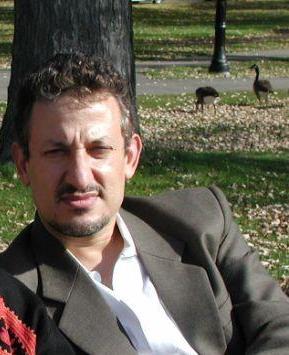 |
Dr. Omar M. Ramahi
IEEE Fellow |
The Exotic World of Metamaterials and Its Relevance to EMI/EMC Engineers
Dr. Omar M. Ramahi
IEEE Fellow, Professor and RIM/NSERC Industrial Research Associate Chair
Professor and RIM/NSERC Industrial Research Associate Chair, Electrical and Computer Engineering,
University of Waterloo, Waterloo, Ontario, Canada
(Chapter VIII, EMC - IEEE Electromagnetic Compatibility Society)
Abstract:
Metamaterials refers to engineered material with properties that do not exist in naturally available media. Exotic
properties of metamaterials includes negative permittivity, negative permeability or even negative permittivity
and negative permeability simultaneously resulting in negative index of refraction. Such metamaterial created
much excitement over the past few years. But can metamaterial offer any practical implication or even
application for EMI/EMC engineers? Can metamaterial provide cost-effective solutions to some of the severe
challenges in the areas of shielding and filtering? In this talk, the topic of metamaterials will
be demystified. Once the fundamental properties of the different types of metamaterials are presented, the
effectiveness of such material in different EMI/EMC and other engineering applications will become clear. We will
explore some important applications of metamaterials in EMI/EMC applications. While this presentation covers
the fundamental principles behind metamaterials, emphasis will be placed on practical real-world engineering applications.
Biography:
Omar M. Ramahi, (Fellow, IEEE, 09) received the BS degrees in Mathematics and Electrical and Computer
Engineering (summa cum laude) from
Oregon State University, Corvallis, OR. He received his M.S. and Ph.D. in Electrical and Computer Engineering from the
University of Illinois at Urbana-Champaign
. From 1990-1993, Dr. Ramahi held a visiting fellowship position at the University of Illinois at Urbana-Champaign. From
1993 to 2000, he worked at
Digital Equipment Corporation (presently,
(presently HP), where he
was a member of the alpha server product development group. In 2000, he joined the
faculty of the
James Clark School of Engineering
at the
University of Maryland
at College Park as an Assistant Professor and later as a tenured Associate Professor. At Maryland he was also a faculty
member of the CALCE Electronic Products and Systems Center. Presently, he is a Professor in the
Electrical and Computer Engineering Department and holds the NSERC/RIM Industrial Research Associate Chair, University of Waterloo, Ontario, Canada. He holds cross appointments with the Department of Mechanical and Mechatronics Engineering and the Department of Physics and Astronomy.
He has authored and co-authored over 240 journal and conference papers. He is a co-author of the
book
EMI/EMC Computational Modeling Handbook, 2nd Ed.
(Springer-Verlag, 2001). Presently, he serves as an Associate Editor for the
IEEE Transactions on Advanced Packaging. Dr. Ramahi
served as a consultant to several companies and was a co-founder of
EMS-PLUS, LLC
and
Applied Electromagnetic Technology, LLC.
|
| |
Technical Track C
|
| 5:00pm - 6:00pm |
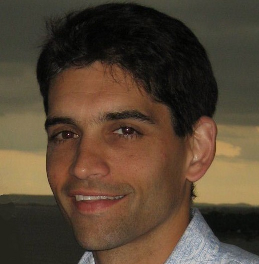 |
|
David Shepler, PMP® |
Net-Zero-Energy Single-Family-Home
David Shepler, PMP®
Jeopardy! Challenge Program Manager, IBM Research
(Chapter X, IEEE Technology Management Council)
ABSTRACT: David Shepler is the first home owner in what has become
the first proven
net-zero-energy
single-family-home development
in the U.S., and possibly the world. His home, located
in New Paltz, NY, achieved it's net-zero-energy goal in
March 2010 after the first full year of occupancy,
producing (and selling back to the utility) 1,700 kWh of excess
energy. The community, called Green Acres, now has seven homes
built and five homes occupied of the 25 lots available. David will
discuss his zero-energy journey including a description of the
systems and construction approach, the financing difficulties
presented by energy investments in a home, and the broader effort
to encourage the adoption of such building practices.
Definition
(Net) Zero Energy Home
- a home that produces more energy than it consumes over the course of a year. The term "net" reflects that the solar
production of energy is connected to the electric grid, so that energy is provided to the grid during the day and across the sunny months
of the extended summer and consumed by the home through the dark nights and winter months. Over the course of twelve months, a net
zero energy home will show overall, or "net", greater production than consumption.
Biography: David Richard Shepler joined
IBM
in 2004 as a consultant in the public sector strategy and change practice, serving
state and federal clients seeking to transform their service operations. In 2007, he joined the IBM internal Business
Transformation/Chief Information Officer (BT/CIO) group providing business transformation services to IBM units. A year
later, he accepted an opportunity to join
IBM Research
on the business development team, standing up a group to provide
project management capabilities to IBM Research projects devoted to government clients. He also pursued his personal
interests in energy and environment and participated in developing business with U.S. federal clients, including
crafting IBM position papers (and proposals) and working to connect IBM and government thought leaders on important, enduring energy issues.
In June 2009, David became the program manager for
IBM's Jeopardy Challenge, an effort to develop a super computer capable of
playing human contestants in the television game show. Providing leadership on the programmatic side of the
challenge (as distinct from the development of the underlying technology), David coordinates the many component efforts
that comprise the challenge, including conducting extensive game-like testing of the system, representing IBM Research in
discussions with Jeopardy producers, scheduling hardware and development plans, and coordinating activities with marketing and communications.
Prior to IBM, David worked as a research assistant at the
RAND Corporation while pursuing a PhD in policy analysis at the
RAND Graduate School where he received a distinction in quantitative methods. Studying econometrics and modeling, David
applied his skills to projects as diverse as HIV in China and aircraft survivability studies for the U.S. Air Force.
David spent the first half of his career as an intelligence officer for the
U.S. Air Force. In 1997, he served in
the Stabilization Force (SFOR) in Bosnia and Herzegovina providing intelligence analysis to the NATO command in an effort
to sustain the peace. David also served in Korea and Germany in an analytical capacity. He spent his last two of
ten years in the Air Force as an academic instructor at the
University of California, Los Angeles.
David received a B.S. in Political Science from the
U.S. Air Force Academy
in 1992. He received
a Master's in Public Management (MPM) from the
University of Maryland, College Park in 1994. He received
his Master's in Policy Analysis with a distinction in quantitative methods from the RAND Graduate School in 2004.
David now lives in New Paltz, NY, and is based at
IBM's T.J. Watson Research Center in Yorktown Heights.
Personal Energy Interests and Work: David has participated actively in public advocacy for zero energy building practices
and removing financial barriers to home buyers interested in pursuing energy efficient homes. He also has a personal
passion for alternative energy, and his home built in early April 2009 has included four essential energy efficient
technologies in an effort to achieve net zero energy: (1) 10 kW of solar panels, (2) a geothermal heating and
cooling system, (3) high efficiency building envelope including insulated concrete forms, high-performance windows, and sprayed
icynene foam under the roof, and (4) a heat-recovery ventilation system.
David has also brought his passion for energy and environment to his work at IBM. In addition to playing a key role
on the IBM Research team that works with governments and businesses regarding issues related to energy
and environment, he has helped facilitate an active dialogue between IBM Research and senior federal officials
regarding solutions to tackle the great energy and environment problems of our time.
His home in New Paltz, NY, is the first zero energy home in what is the first attempt at a true zero
energy community in the eastern United States.
|
| 6:00pm - 7:00pm |
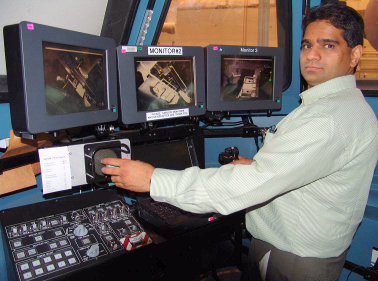 |
| Dr. Abhilash Pandya |
Remote Tele-operated Robot Control
Abhilash Pandya, Ph.D
(Chapter XII, IEEE Control Systems Society)
Assistant Professor, Electrical and Computer Engineering Department, Biomedical Engineering Department,
Wayne State University,
Computer Assisted Robot Enhance Systems
In this talk, a brief outline will be given first on three separate but related remote robotic applications -- Medical Robotics,
Military Robotics and NASA robotics. All three have a remote operator controlling a robot to do various tasks. The focus will then
be on the
NASA robotic implementation of Augmented Reality techniques as follows:
End-effector control of robots using just remote camera views is difficult due to lack of perceived correspondence between the
joysticks and the end-effector coordinate frame. This presentation reports the positive effects of Augmented Reality visual cues
on operator performance during end-effector controlled tele-operation using only camera views. Our solution is to overlay
a color-coded coordinate system on the end-effector of the robot using AR techniques. This mapped and color-coded
coordinate system is then directly mapped to similarly color-coded joysticks used for control of both position and
orientation. The AR view along with mapped markings on the joystick give the user a clear notion of the effect of their
joystick movements on the end-effector of the robot. All camera views display this registered dynamic overlay information
on-demand. A test using participants comparing control of performance with and without the coordinate mapping was performed
by using a simple insertion task. Results indicate a significant reduction in distance, reversal errors and mental
workload. Portions of this system are installed at
NASA's Johnson Space Center Robotic Simulator.
Abhilash Pandya's professional research objective is the utilization of computation, robotics and Engineering principles to
study and impact Science and Medicine. His main expertise is in software development for advanced visualization technology as
applied to image guided and robotic surgery. His experience varies from development of Robotic technology at the
space center in Houston, to working closely with surgeons in their operating rooms on technology development for image
guidance and robotics at the Neurosurgery department. I am currently a faculty at the Department of Electrical and
Computer Engineering teaching classes in Medical Robotics and Systems (Graduate),
Microcontrollers (assembler programming and hardware interfacing), Circuits, and Numerical Methods. He
has over 80 publications in he fields of Image guided surgery, Robotics, Biocomputing, Bioengineering, Virtual Reality and Augmented Reality.
In 1987-88 he was a key original member of a small (15 people) start-up Biotechnology Company (Virogen Inc.) which
was developing sensors related technology for robotics AIDS sample handling. From 1988 to 1998 (10 years), he worked
at
NASA Johnson Space Center
(
Space Center
) under various
Lockheed Martin
contracts for
NASA's Flight Crew Support Division. His projects
included building software for a Laser-based 3D astronaut scanning, 3D modeling of space station and shuttle environments
and developing software for Space Station robotics. In addition, while at NASA, he developed software for a fully-immersive
kinematics-based human Virtual Reality system for Space Station applications. From 1998 - 2002, he worked at the
Neurosurgery Department (Harper Hospital) at
Wayne State University
where he developed and supported
Image Guided Surgery software and hardware for use in the operating room and lead a team of Engineers in research
deployment of Robotic and Image Guided Neurosurgery.
He completed his Ph.D in Bioengineering from Wayne State University with concentration and certification
in Scientific Computing with his thesis in the area of Advanced Visualization for Image Guidance and Medical Robotics. He
completed his Masters degree in 1988 in Bioengineering (with concentration in Computer Science) at the
University of Michigan
at Ann Arbor where his research was in R-C circuit modeling and simulation of the signal
processing (from sound waves to action potentials) of the inner ear. His undergraduate education was a
combination of Biochemistry with a concentration in Computer Science (4 classes from a double major) from the
University of Michigan at Dearborn.
|
| |
Technical Track D
|
| 5:00pm - 5:45pm |
 |
| Prof. C.J. Chung |
Robofest Vision Centric Challenge (VCC) 2010 and 2011 Demonstrations
Prof. C.J. Chung
Associate Professor of Computer Science and Director of ARISE (Autonomous Robotics Institute for Students and Educators / Scientists and Engineers)
Lawrence Technological University
Using computer vision as the main sensory modality of autonomous mobile robotics projects has
the following advantages:
-
Low cost (compared to expensive laser scanners)
-
Richness of information
-
Low power consumption (compared to laser scanners)
-
Retrieving 3D information with stereo vision
In order to promote research on computer vision and autonomous mobile robotics, Robofest challenge
college students as well as talented high school students with VCC challenges since 2007.
VCC 2010 Demonstration
VCC 2010 High School division winner team Roboteers (348-1) from Canton, Michigan will
demonstrate the following 2010 challenge: To recognize and read the mission data represented
in a 2D barcode placed by a judge on the floor. The mission data barcode includes the
number of landmarks and first turn direction, either left or right. Then the robot needs
to completely navigate through all the landmarks and return home and stop.
Team members are: Daniel Anderegg, Noah Crocker, and Daniel MacLennan. The coach is Jonathan Crocker.
VCC 2011 Demonstration
Ryan Matthews (
Lawrence Technological University
) and Eric Barch (
Kettering University
) will demonstrate
the VCC 2011 challenge. The mission is to follow a dashed lane while avoiding
orange safety cones. When yellow dead end sign is detected, turn around and
come back to the starting point. 3 minutes are given for each run. Ranking
will be based on (1) the time taken, and (2) the distance traveled. Ryan will
be using iRobot's iCreate and Eric will be using the L2Bot.
Biography: CJ Chung attended
Hong-Ik University
in Seoul, Korea, where he earned a B.S. degree. He received
his Ph.D. in Computer Science from
Wayne State University
in 1997. He received a full fellowship for his study abroad from the
Electronics and Telecommunication Research Institute (ETRI)
, where he worked as a senior research scientist from 1982 till 1992. At ETRI, he was
involved in developing TDX electronic switching systems that became the first CDMA system in the world. Chung also
worked as a visiting researcher for
L.M. Ericsson Co.
in Sweden from 1983 to 1984. His doctorial research was the development of a self-adaptive
system motivated by cultural evolution process. His current research interests include
evolutionary neuro-fuzzy systems, robot vision, and evolutionary cooperative
robotics. In order to motivate and inspire young students into science and
engineering fields, the annual
Robofest (www.robofest.net)
has been started by him since 2000. In addition he started believed-to-be the world first
and unique Thanksgiving Autonomous Robot Parade since 2006. He is also a director
ARISE (Autonomous Robotics Institute for Students and Educators / Scientists and Engineers) at
Lawrence Tech. For more information, visit his personal home page at
https://qbx6.ltu.edu/chung
.
|
| 5:45pm - 7:15pm |
 |
| Prof. C.J. Chung |
Robofest 2v2 RoboSumo Competitions
Prof. C.J. Chung
Associate Professor of Computer Science and Director of ARISE (Autonomous Robotics Institute for Students and Educators / Scientists and Engineers)
Lawrence Technological University
The objective of nVn RoboSumo is to push the opponent's robots out of the Sumo ring. Sumo "wrestling" is the most
popular robot competition around the world. However, this
IEEE SEM
event is believed to be the world's first multi robot autonomous
sumo competition.
This time we will use n = 2, that means a team consists of
two robots. Can a muscle robot equipped with powerful motors dominate the games? Maybe not. Note that
a robot team loses a game if a robot is pushed off the ring by another team robot. This game
encourages the development of intelligent object detection, recognition, and multi robot collaboration
algorithms via robot communication mechanisms. Winner teams will win $50 gift cards sponsored by the Robofest office.
2v2 Sumo teams High School Division
|
Student Name(s)
|
School
|
Programming Language used
|
|
Morgan McCann,
Hunter Erdman,
Michael Vance
|
St. Clair High
Coach: Scott P. Eisele
|
NXC
|
|
Stacey Harimoto
Meghna Menon
|
Cranbrook
Coach: Betsy Lamb
|
C
|
|
Jacob Feord
Domenic Di Pietro
|
Cranbrook
Coach: Betsy Lamb
|
C
|
2v2 Sumo teams College Division
|
Student Name(s)
|
University, Major
|
Programming Language used
|
|
Jonathan Nabozny
|
Lawrence Tech, CS
|
LeJos Java
|
|
Daniel Rosendale
|
Lawrence Tech, CS
|
RobotC
|
|
Taiga Sato
|
Lawrence Tech, CS
|
LeJos java and RobotC
|
|
Daniel Anderegg
|
Lawrence Tech, CS
|
RobotC
|
|
Howard Randolph & Alexandru Versin
|
Lawrence Tech, ECE
|
LeJos Java
|
|
Joseph Long
|
Lawrence Tech, CS
|
LeJos Java
|
|
Asya Lushnikova
|
Lawrence Tech, CS
|
LeJos Java
|
|
Saundra Manning
|
Lawrence Tech, CS
|
LeJos Java
|
|
Jonathan Ruszala
|
Lawrence Tech, CS
|
LeJos Java
|
|
|
|
|

 Invited Presentations
Invited Presentations


